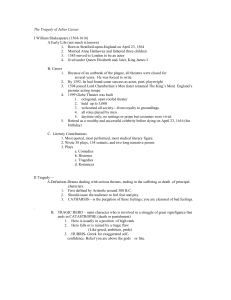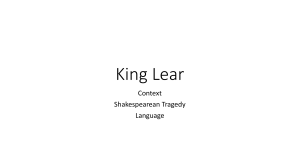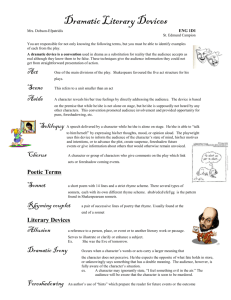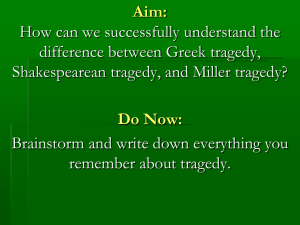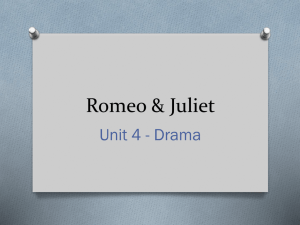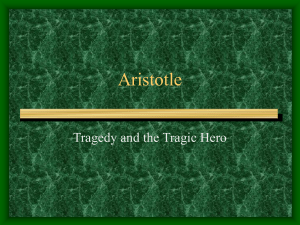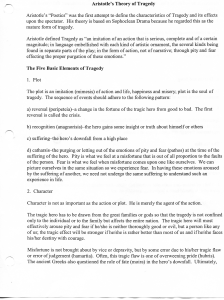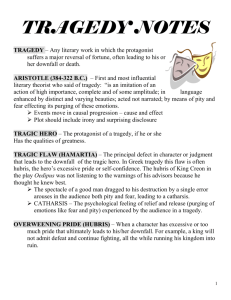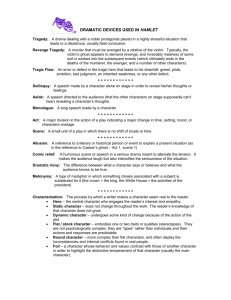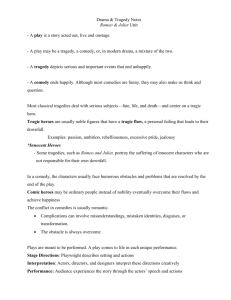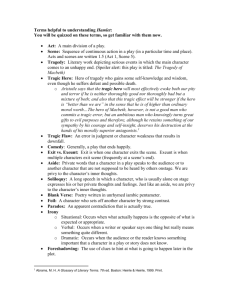Romeo & Juliet: Drama Terms & Tragedy Structure
advertisement
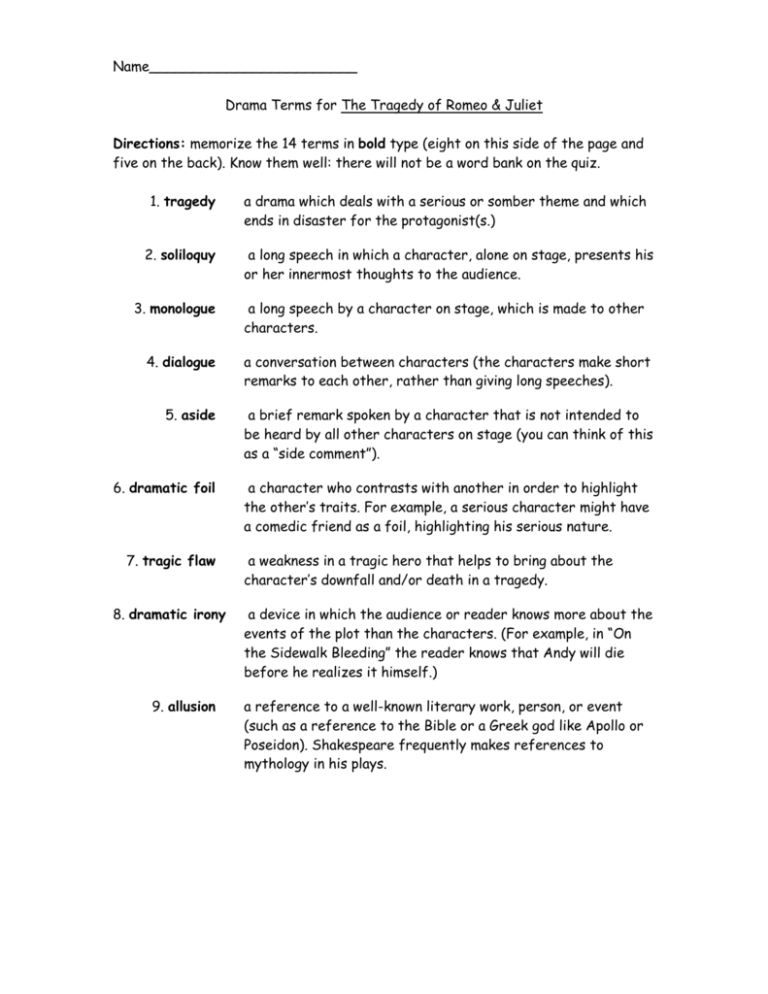
Name________________________ Drama Terms for The Tragedy of Romeo & Juliet Directions: memorize the 14 terms in bold type (eight on this side of the page and five on the back). Know them well: there will not be a word bank on the quiz. 1. tragedy a drama which deals with a serious or somber theme and which ends in disaster for the protagonist(s.) 2. soliloquy a long speech in which a character, alone on stage, presents his or her innermost thoughts to the audience. 3. monologue a long speech by a character on stage, which is made to other characters. 4. dialogue a conversation between characters (the characters make short remarks to each other, rather than giving long speeches). 5. aside a brief remark spoken by a character that is not intended to be heard by all other characters on stage (you can think of this as a “side comment”). 6. dramatic foil a character who contrasts with another in order to highlight the other’s traits. For example, a serious character might have a comedic friend as a foil, highlighting his serious nature. 7. tragic flaw 8. dramatic irony 9. allusion a weakness in a tragic hero that helps to bring about the character’s downfall and/or death in a tragedy. a device in which the audience or reader knows more about the events of the plot than the characters. (For example, in “On the Sidewalk Bleeding” the reader knows that Andy will die before he realizes it himself.) a reference to a well-known literary work, person, or event (such as a reference to the Bible or a Greek god like Apollo or Poseidon). Shakespeare frequently makes references to mythology in his plays. The Structure of a Shakespearean Tragedy Most stories, including tragedies, include these five elements of Shakespearean tragedy. Shakespeare follows this structure so closely that each act corresponds with each of the five parts. Act 1: The exposition, which introduces the characters, setting, and conflict. Act 2: Rising action, when the conflict introduced in the exposition intensifies like a pot beginning to boil. Act 3: The climax, which is the turning point of the story. This is when the pot boils over and the outcome of the story is determined. In a tragedy, this means that the downfall of the tragic hero is now inevitable. Act 4: Falling action, when the conflict starts to unravel and the action moves toward the end. Act 5: The resolution: this is the final outcome of the story (the downfall of the tragic hero). The following diagram illustrates this plot structure: Climax Rising Action Falling Action Resolution Exposition Check your understanding… 1. What do soliloquies and monologues have in common? ___________ __________________________________________________. 2. The difference between a soliloquy and a monologue is that _________ ______________________________________________________ . 3. The difference between a remark a character makes as dialogue and an aside is that _________________________________________________.
